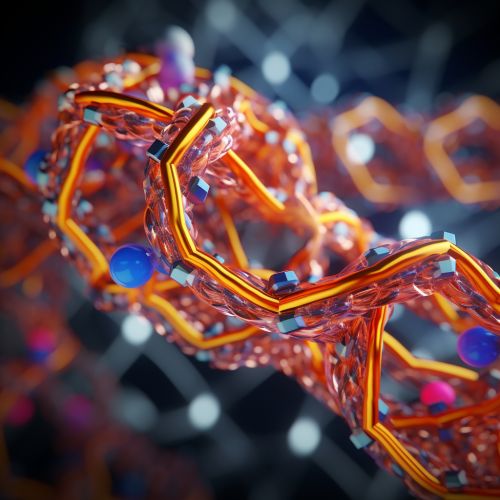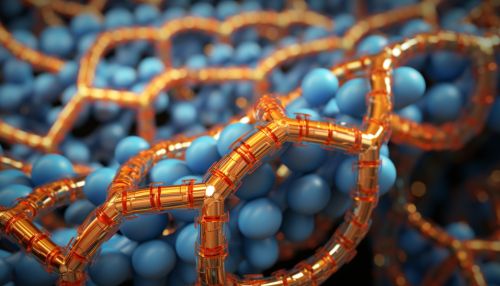Nucleosome
Overview
A nucleosome is a fundamental unit of DNA packaging in eukaryotic cells. It is composed of a segment of DNA wound in sequence around eight histone protein cores. This structure is often compared to thread wrapped around a spool.
Structure
Nucleosomes are composed of 147 base pairs of DNA wrapped around a histone octamer, consisting of two copies each of the core histones H2A, H2B, H3, and H4. Core histones are highly conserved proteins that have a globular domain at the C-terminus, and a long N-terminal tail that is the site of various post-translational modifications.


Function
The primary function of the nucleosome is to compact DNA within the cell nucleus. Without such packaging, the DNA in one human cell would stretch nearly 2 meters end to end. Beyond this structural role, nucleosomes also play a crucial role in gene regulation. By controlling access to the underlying DNA, nucleosomes can influence which genes are active in a cell at any given time.
Histone Modifications
Histone proteins in the nucleosome can be modified post-translationally, meaning after the protein has been formed. These modifications occur primarily on the N-terminal tail of the histones and include methylation, acetylation, phosphorylation, ubiquitination, and sumoylation. These modifications can alter the structure of the nucleosome, influencing how tightly the DNA is wrapped around the histones and thus controlling access to the DNA.
Nucleosome Positioning
The position of nucleosomes along the DNA can influence gene expression. Certain sequences of DNA are more favorable for nucleosome formation, and these sequences can be found at specific locations in the genome. This positioning of nucleosomes can block or expose binding sites for other proteins, influencing the transcription of genes.
Nucleosome Remodeling
Nucleosome remodeling is the process by which nucleosomes are moved along the DNA. This can involve sliding the nucleosome along the DNA or removing and repositioning the entire nucleosome. Remodeling is carried out by nucleosome remodeling complexes, which use the energy from ATP hydrolysis to change the position of the nucleosomes.
